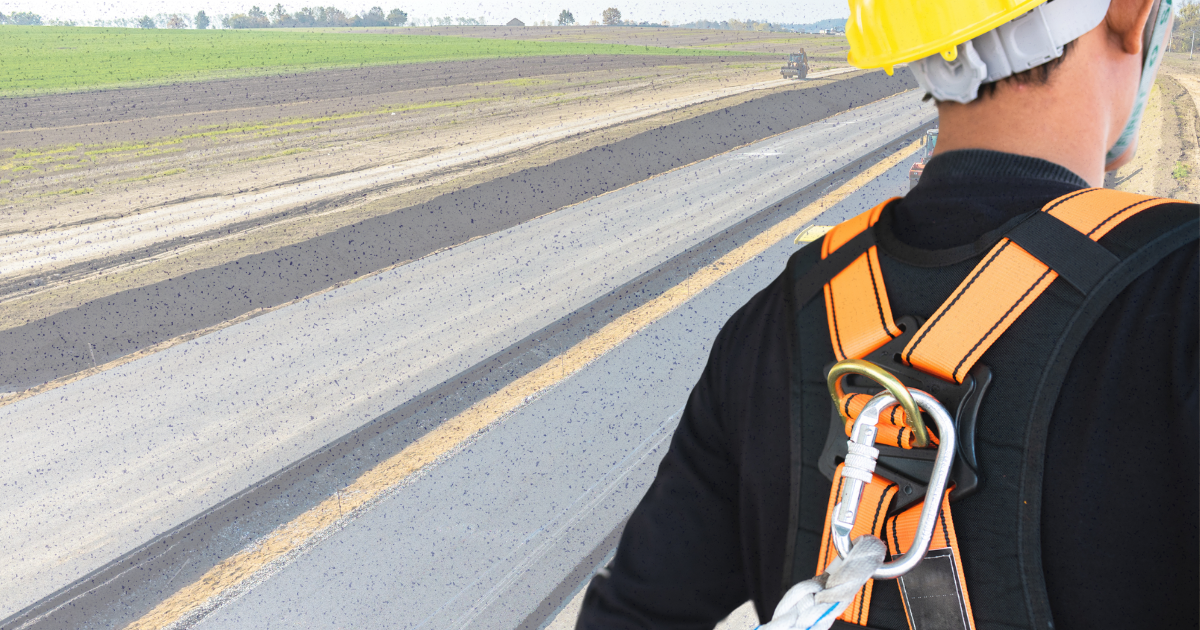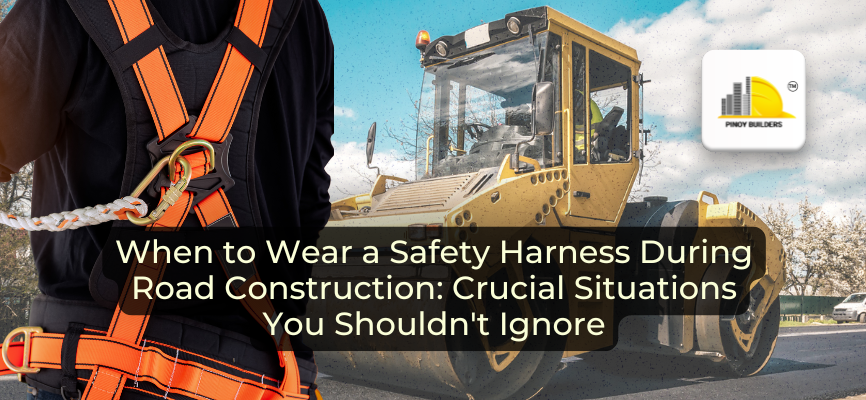Road construction increases the risks of falls and accidents, which is why safety harnesses are essential equipment for such projects. Construction sites are dynamic and often entail hazardous working conditions. This is why the proper use of safety harnesses is essential; it goes beyond upholding industry standards—safety gear protects and saves lives.
Safety harnesses are vital for maintaining a secure construction site. In this article, we will discuss common scenarios where wearing a safety harness is essential to prevent accidents and ensure the well-being of everyone on-site.
The Importance of Safety Harnesses in Road Construction

In road construction, safety harnesses serve as a critical line of defense against cuts, falls, bruising, and related injuries. When working at heights or in unstable positions, harnesses provide the necessary support and protection to mitigate risks in potentially hazardous situations.
The activities involved in construction projects themselves add to the danger. Heavy machinery and sharp, dangerous tools are common on-site. Additionally, unpredictable conditions and challenging terrain in uneven areas contribute to the heightened risk.
Many construction workers understand that risk is part of the job description. However, it is still important to observe responsible construction practices, which involve ensuring the safety of everyone in the vicinity. Harnesses, designed to keep workers secure and mitigate the inherent hazards in these demanding jobs, serve this purpose.
Situations Requiring Safety Harnesses
1. Operating/Near Heavy Machinery
Cranes and bulldozers, among other heavy machinery, significantly increase the risk of collisions or falls. Workers who are operating or working close to such machinery are at heightened risk, making safety harnesses an essential gear at all times. If a fall occurs, a safety harness like a seat belt and hard hats securely holds and protects the worker, thereby reducing the likelihood of serious injuries.
2. Loading/Unloading Equipment
The process of loading and unloading heavy or bulky materials can pose a danger to the workers. Workers are often required to maneuver these materials from elevated positions or uneven ground, increasing the risk of falling. Harnesses are required for these activities because they provide critical support and prevent accidents during these high-risk tasks. These tasks also involve harnessing the bulky materials themselves for additional protection.
3. Using Equipment or Working Near Others Using Equipment
Working near operating equipment always increases the risk of injury from potential malfunctions or unexpected movements. A safety harness is vital in these situations to ensure that workers remain protected despite being close to moving machinery and other operational hazards.
4. Around Holes or Digs
Excavations and open holes (barricaded or not) increase the site’s fall hazards. Whether working near these areas or directly over them, the risk of falling into an excavation site can be severe. Safety harnesses are a necessary precaution around such dangerous zones in addition to proper fencing or barricading, offering protection to the workers and preventing potentially fatal accidents.
5. General Requirement for Safety Gear
Beyond these specific scenarios, a construction site should consistently wear safety harnesses. Safety harnesses are a fundamental addition to a comprehensive personal protective equipment (PPE) strategy, which should also include helmets, gloves, and eye protection, among others.
Maintaining a safer working environment overall requires proper use of all PPE. Remember, workers wear safety harnesses to enhance their safety at all times. This is a usual requirement at all construction sites.
Benefits of Using Safety Harnesses
The benefits of wearing safety harnesses extend beyond just preventing falls. They significantly enhance overall site safety by providing a reliable safeguard against the most common construction accidents. Harnesses contribute to a culture of safety, offering peace of mind to workers and promoting awareness of safety practices. Adhering to safety harness protocols reduces the risk of serious injuries, helps prevent accidents, and ensures a secure working environment in road construction. Workers and site managers should prioritize harnesses and other PPE for health and safety. By doing so, they uphold safety standards and contribute to a safer, more effective construction site.
References
Advanced Consulting and Training. (n.d.). Road Construction Safety Tips. Advanced Consulting and Training. Retrieved September 18, 2024, from https://advancedct.com/7-road-construction-work-safety-tips/
BigRentz. (2020, April 3). 11 Essential Road Construction Safety Tips. BigRentz. Retrieved September 18, 2024, from https://www.bigrentz.com/blog/road-construction-safety










